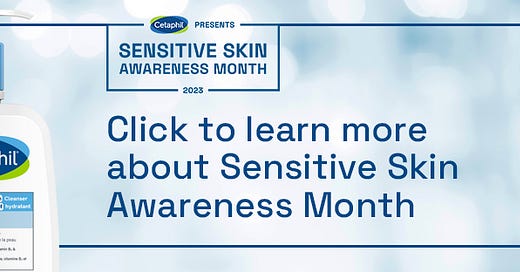Analgesic TENS may reduce carboxytherapy-associated pain in the treatment of cellulite
Today’s report also covers research into the quality of life in mothers of children with psoriasis, skin disorders in transgender patients, and more (1,170 words, 5.5 minutes)
The Women in Dermatology e-newsletter is supported without restriction by Galderma Canada
Good morning and welcome to the Women in Dermatology e-newsletter from Chronicle Companies. We’re pleased to have you join us. This biweekly bulletin will update you on new findings regarding dermatologic issues that affect women and the female dermatologists who care for them. We welcome your feedback and opinions, so let us know if you have any comments, observations, or suggestions. You can email them to us at health@chronicle.org
The treatment of cellulite with carboxytherapy can be limited by pain. Although only transcutaneous electrical nerve stimulation (TENS) has been shown to reduce pain associated with carboxytherapy, medium-frequency currents might be effective as well. A recent study published in the Journal of Cosmetic Dermatology (Apr. 2023; 00:1-9) compared the analgesic effects of TENS, interferential current (IFC), and Aussie current on pain intensity in female patients undergoing carboxytherapy for cellulite.
For this study, 75 women between the ages of 18 and 49 years with moderate to severe gluteal cellulite were evenly randomized into three groups: TENS, IFC, and Aussie current. The severity of their cellulite was assessed using the cellulite severity scale (CSS) developed by Hexsel Dal'Forno & Hexsel, and the cellulite areas were marked before carboxytherapy was applied. Each group then received three carboxytherapy sessions with their assigned electrical current. Pain intensity was evaluated using a numeric rating scale ranging from 0 to 10, where 0 meant “no pain” and 10 was “the worst possible pain.” Sensory comfort was also assessed using a visual analogue scale (VAS) where the left represented “more comfortable” and the right was “less comfortable.”
The results indicate that there was no significant difference in pain intensity among the three groups during the three treatment sessions. However, pain intensity decreased during subsequent sessions in all groups. Additionally, there was no significant difference in sensory comfort among the TENS, IFC, and Aussie current groups.
The authors note the results show medium-frequency currents are as effective as TENS in reducing pain during carboxytherapy treatment. While the results were not statistically different, the study showcases a less explored area of application for electroanalgesia using lower-frequency currents.
Bottom line
The authors concluded that low and medium-frequency currents are effective for reducing pain during carboxytherapy for cellulite reduction. In terms of sensory comfort, they say that all three methods studied, TENS, IFC, and Aussie current, are considered equally comfortable. The study provides alternatives to TENS to reduce pain and discomfort during carboxytherapy.
From the literature on women in dermatology
Quality of life in mothers of children with psoriasis
A study published in the Journal of Cosmetic Dermatology assessed the effects of childhood psoriasis on the quality of life of the mothers of these children. The authors found that childhood psoriasis can have a negative impact on the quality of life of mothers and caretakers. For this study, the researchers used the Family Dermatology Life Quality Index (FDLQI) to evaluate the quality of life of 100 mothers of children with various types of psoriasis.
Applying hyaluronic acid to the facial fat compartments and the line of ligaments to achieve a lifting effect on the face
A study in the International Journal of Women’s Dermatology evaluated the practical use of facial fat compartments and the line of ligaments in facial rejuvenation and enhancement. According to the study, treatments that address the line of ligaments, facial fat compartments, and facial fascial layers help achieve natural and aesthetically pleasing results. The researchers used a technique that involved filling the superficial lateral temporal cheek fat compartment with a moderate amount of hyaluronic acid (HA) to lift the lower facial tissues and accentuate the jawline. In this study, the authors presented the case of a 56-year-old woman who received HA fillers on her cheeks using this technique.
The treatment was effective immediately in terms of improving jaw contouring. The patient reported experiencing some bruising at the injection site, as well as tension, swelling, and sensitivity. However, these side effects resolved without medical attention within 48 hours after the filler application. The patient was assessed two weeks following treatment and rated her facial improvement as “very much improved.” She also expressed being “very satisfied” with the results and would recommend the treatment to her friends. The authors concluded this technique is a safe and effective way to achieve facial rejuvenation in some patients.
Quality of life in women with vulvovaginal lichen planus treated with topical corticosteroids or tildrakizumab
A study published in the Australasian Journal of Dermatology compared the quality of life of vulvovaginal lichen planus (VLP) patients treated with topical treatments or tildrakizumab. The researchers found that in women whose VLP symptoms did not improve with conventional systemic medications, tildrakizumab led to a significant decrease in the Vulvar Quality of Life Index (VQLI) scores and a better quality of life. Their scores were also lower than those of women using topical corticosteroid treatments.
For this retrospective cohort study, the researchers reviewed the electronic medical records of 112 adult women diagnosed with VLP. Then, they compared VQLI scores regarding symptoms, daily activities, anxiety, and sexual function between women able to maintain disease remission with topical treatment and women who needed conventional systemic immunosuppressants or tildrakizumab due to treatment-resistant disease.
Skin disorders in transgender patients
A study published in Dermatology in Public Health Environments examined the most common skin disorders associated with gender affirmation treatments in transgender patients. The study found that trans women are more likely to develop disorders related to estrogens and antiandrogens, such as dry skin, brittle nails, and skin conditions on the genital area after gender reassignment surgery. The study also revealed that trans men are susceptible to disorders related to testosterone, such as acne and androgenic alopecia. Additionally, trans men tend to develop skin disorders due to chest binding.
VIDEO: Unraveling the mystery of lichen sclerosus with Dr. Jill Krapf
Dr. Jill Krapf, a Washington, D.C.-based specialist in lichen sclerosus (LS), discusses the effects of steroids on the skin. She also describes the primary characteristics of LS, including possible treatments, the disease lifecycle, and how steroids can help with LS symptoms.
A case of lymphedema and painless papules of the vulva
A case study published in the International Journal of Women’s Dermatology described an 86-year-old woman who presented with painless, irritated spots on both sides of the labia majora. The lesions had caused hardening in her lower abdomen. She had a history of bladder cancer and was taking enfortumab and pembrolizumab. A histopathological examination showed a high amount of cell division and the presence of cancerous cells in the lymphatic system. The patient was diagnosed with metastatic urothelial cancer in the vulva and lower abdomen. This case highlights the importance of thorough genital and perianal examinations.
Coming Up in Women in Derm
Apr. 28-30 → Women’s Dermatologic Society Forum (Orlando, Florida)
Jun. 14-17 → 98th Canadian Dermatology Association (CDA) Annual Conference (Toronto)
This month:
April is Rosacea Awareness Month
April is Parkinson's Awareness Month
Apr. 23 to 30 is National Immunization Awareness Week
Apr. 28 is National Day of Mourning
May is Melanoma Skin Cancer Awareness Month
May is Huntington’s Disease Awareness Month
May 1 to 7 is Mental Health Week
May 8 is Check Your Skin Day
May 10 is World Lupus Day
Something to think about
“Anything out of the ordinary, especially if you have fair skin or a family history of skin cancer, should be checked out. I recommend getting regular skin exams so nothing suspicious goes unnoticed.”
— Dr. Michele Green, a New York City-based cosmetic dermatologist in an interview with Vogue.






